Pillowy Venetian Buns
How to make Northern Italian sandwich buns - A foolproof recipe for the busy home baker
Hi and welcome to Dash of Prosecco, a newsletter about good food, slow travel, and life on the Venetian mainland. Thank you for reading!
There’s a tiny bakery in my neighbourhood, just across the street, tightly sandwiched between the butcher’s and the Pakistani grocer. Nothing fancy, really, just a classic mom-and-pop shop like many others throughout Italy. To us, it’s simply “il panificio,” the bakery—the unassuming, old-fashioned home to everyday bread that’s bursting with flavour and tastes infinitely better than anything the supermarkets can offer on any rushed day.
The shop itself is small, much of the available space taken by a chunky, well-polished wooden counter the colour of chestnut honey. Under the bright neon lights lives a bounty of pizzette di pane—bready pizzas the size of a palm—potato and tomato schiacciatas—savoury flatbreads that are chewy in the middle and crackly, almost burnt at the edges—glistening jam crostatas, apple strudels, and nut tarts laden with almond essence. All eternally fighting for the customer’s attention.
Serving the loyal clientele is the lady of the house. Always kind and smiling, she moves nimbly, filling paper bags with the requested loaves, buns, and rolls, which she picks from the chests behind her. These are mostly small breads, or “panini”, that are typical in Venice and its region—soft, white buns in various fun shapes and forms. Some have cute names like "turtles," "tiny mice," "small roses," and "small fans." Others come with regional names that may vary from town to town and region to region.
While different in shape and name, these buns share the same essence: a low-hydration dough made from plain flour, a bit of water, salt, and either animal or vegetable fat. I write more about this traditional bread further on in the post, where I also provide a simple, quick, and foolproof 'store cupboard' recipe that is ready in less than 3 hours.


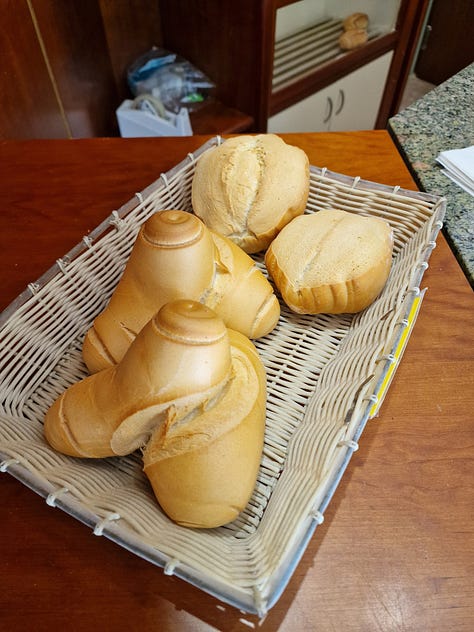
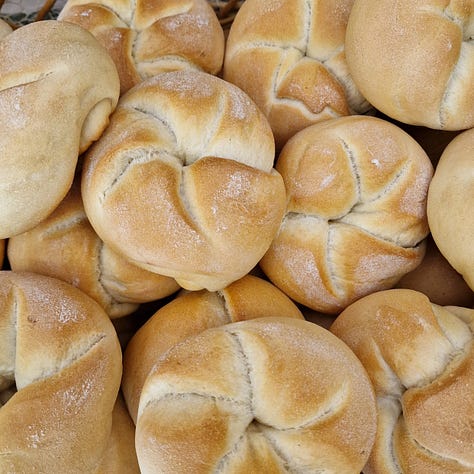
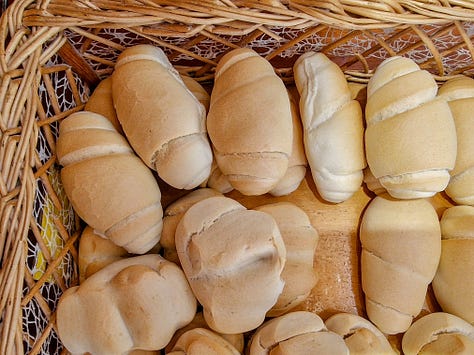
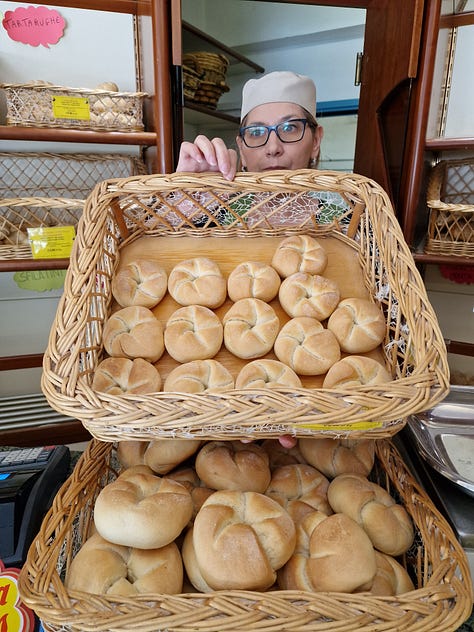
Every now and then, the baker himself, Signor Bepi, emerges from the workshop carrying a tray of freshly made goodies that smell warm, homey, and inviting. Calmly, he tips the buns into their designated chest. Then he slips away to his floury back rooms. From the front of the shop, there’s not much you can see of this secret space—just tall, white walls, a long steel table, and trolleys loaded with trays. So you can imagine my excitement when I finally mustered up the courage to ask for a tour and was met with an enthusiastic yes.
Signor Bepi is a fun, chatty guy. Throughout our hour-long conversation, he kept emphasising how much he loves baking. Spending more than 12 hours a day in his shop (starting his shift at 2 a.m.!) feels like a gift to him rather than a daunting task. Bread quality is paramount. That’s why he uses less processed flours, allows for longer rising times, and is happy not to partake in “distractions” that would force him to make compromises in order to speed up and expand production (such as opening an online shop or bulk selling to larger stores).
Panificio da Bepi is an old-school one-man show that moves at a human pace. And that’s why the whole neighbourhood adores it.

But it turns out that Signor Bepi has just sold the shop.
Starting from June 1st, he’ll retire to finally enjoy some well-deserved rest and family time. We all knew he’d been considering this decision for a few years now, and, to be completely honest, my partner and I discussed several times whether acquiring the shop could be a good move for us. And then, well, I’ve had the worst couple of years health-wise in a very long time. Timing makes all the difference in life’s big decisions, doesn’t it?
The good news is that the bakery will keep going with a new captain at its helm—a 40-year-old-something wishing to change the course of his life, like many do when the dreaded number looms large. Interestingly enough, Signor Bepi also became a baker around the same age, leaving behind a successful career in the naval sector that no longer suited him. He’s been training the new guy for a few months now, which is fantastic to hear.
There used to be more of these shops around town but most have gone out of business, slowly, gradually, one by one. Long hours, demanding night shifts, and health issues from the constant inhalation of flour are just some of the reasons why younger generations are stepping away from the trade. The rise of industrial baking in supermarkets is another.
Bepi could have called it quits much sooner; instead, he waited until the right person showed up. By passing on his craft so the business can continue flourishing, he’s doing us all a great service. Wishing him a very happy retirement :)
Recreating the classic Venetian bun
In Italy, much like in France, we have a tradition of buying our daily bread from small local bakeries, like Bepi’s shop. We’re intimately familiar with how it tastes, the sound it makes when we tear it apart or slice it on the kitchen counter. We could recognize its smell from miles away. Yet, we wouldn’t know how to bake it ourselves.
I knew Bepi wanted to sell; the more I thought about it, the more I wanted to learn to replicate his basic buns just in case no one was going to keep the bottega up and running.
With a full-time job and trying for a baby, my rationale when developing this recipe was simplicity and inclusivity. I needed a dough that would not only provide the “authentic” experience in terms of taste, texture and appearance— but also be straightforward, time-efficient, and forgiving enough to fit into the rushed routine of a working person, a tired pregnant woman (hello!), and even an overwhelmed first-time parent. 1
I wanted a recipe that could keep tradition alive while being firmly anchored in the reality of modern everyday life.
Scroll for the recipe.

RECIPE: Pillowy Venetian Buns
Here’s a base recipe for Italian low hydration buns, a regional bread most common in northern Italy2 and a historical fixture of the Venetian table at least since the Romans.
This type of bread is known as "pane a pasta dura," which translates to "hard dough bread”, a bread made with a small amount of water, resulting in a firm (“hard”) dough.
Once baked, it produces a thin, flaky crust and a surprisingly soft, thick and pillowy crumb that yields easily to the bite, with little to no chewiness.
Slice a bun in half and fill it with frittata, slivers of Grana Padano and ripe tomatoes for a lazy sandwich lunch, or use it as a vessel for mopping up the generous juices of warm-weather salads and pasta sauces.
The recipe takes about 3 hours and requires basic pantry tools and ingredients: a rolling pin, a large bowl, plain flour, dried yeast, water, salt, vegetable oil, and a little honey or sugar. If making a large batch (1.5kg upwards), you may want to use a stand mixer, otherwise, 10 minutes of hand kneading will suffice without exhausting you.
I’ve added pictures to guide you through the shaping process. Signor Bepi calls these “topolini”, or small mice. In the footnotes, you’ll also find visual clues for two more shapes: mantovana and montasù.3
The buns freeze well, and stay fresh for about 2 days when covered with a clean kitchen cloth or, even better, kept in an airtight container.
Recipe makes 5 large buns.
Ingredients
Water, 240gr (1 cup), warm
Honey, half a teaspoon
Active dried yeast, 9gr (1 tablespoon)
Flour, 500gr (4 cups) all-purpose / plain / Italian 0 or 004
Sea salt, 8gr (1½ teaspoon)
Sunflower oil, 40gr (2⅔ tablespoons)5
Utensils
Rolling pin
Large bowl
Method
Yeasty Water: Dissolve the honey in warm water, then, add the yeast, stirring gently. Set aside until frothy, about 5 minutes.
Dough: Roughly combine the yeasty water and flour to form a shaggy dough. Work directly on a clean surface or in a large bowl. Sprinkle the salt, add the oil, and bring together into a ball using your hands. There will be oily patches and dry bits, plus some loose flour—don’t worry. Pick up the loose flour by rubbing the ball of dough gently onto it.
Kneading: Knead by hand on a sturdy surface for 10-12 minutes, or about 6 minutes if using a stand mixer fitted with a dough hook.
After kneading, beat the dough with a rolling pin about 10 times (give it your all). The dough will not look completely smooth at this point, but you’ll notice a marked improvement in texture.
Dividing: Divide the dough into 5 pieces, each weighing about 155 grams (eyeball it or use a scale for precision)6. Roll them into balls and moisten with your wet hands. Cover with a cloth and leave to rest for 10 minutes. The gluten will relax, and they will be much easier to roll out.
Shaping:
Flatten each dough ball into an almond shape, about half a centimetre thick and 25 cm long, with one of the pointy sides facing you.
Starting from the right edge, roll each piece on itself, forming a log, seam side down.
With the log placed vertically in front of you, use a rolling pin to flatten it into a long strip, about 40 cm long and half a centimetre thick.
Use your palms to roll it up tightly, starting from the short end closest to you, forming a cylinder of rolled dough, similar to a croissant but shorter and stouter.
Proofing: Put the shaped rolls on a baking tray lined with parchment paper, seam side down. Lightly moisten them with your hands to prevent drying out, and cover with a cloth. Leave to rise in a warm place for at least 1 hour, or until doubled in size. Halfway through, moisten the rolls once again.
Baking:
Preheat the oven to 220°C / gas mark 7 / 425°F.
Moisten the loaves one last time and place in the oven, immediately lowering the temperature to 200°C / gas mark 6 / 400°F.
After 10 minutes, reduce the temperature to 180°C / gas mark 4 / 350°F, and bake for another 20 minutes.
When ready, the loaves should be delicately golden and emit a hollow sound when tapped on the base.
Check the footnotes for more details on bun sizes, alternative shapes, and different types of flour and oil.
About Me
My name is Sinù Fogarizzu and I’m a vegetarian food & travel writer from the mainland of Venice, Italy. In 2021, I launched Dash of Prosecco, a Substack newsletter about learning to cook and Venetian cuisine, that has now expanded into slow and sustainable travel. With the new “Slow Venice” column I hope to open up a space for dialogue on ways we can all contribute to a healthier tourism model for the floating city. Browse my archive and recommended newsletters and come find me on Instagram & Twitter.
Professional women bakers are a rare occurrence in Italy, making them all the more worthy of celebration. If starting a bakery is challenging for young men in their prime, imagine the tough choices women face when wanting to build a family alongside a demanding baking business. Not being around your kids as they grow, or having to choose between motherhood or remaining child-free… Can anyone really afford to close their shop, and lose income, for months on end during pregnancy and the first months with a newborn? Perhaps more than once over a few years? To me, these women are incredibly brave, so if you know any female-run bakeries, please support them. Around Venice, I recommend checking out Giulia Busato’s Tocio, in the small countryside village of Noale. Giulia is a talented and passionate baker who has received several national accolades. She loves to experiment, often collaborating with organic and small-scale producers of hyper-local ingredients. If you’re renting a car and exploring Venice’s terraferma—please do—make sure to stop by her bakery.
With slight variations, low-hydration bread can also be found outside the Veneto region. For example, it appears in Sicily and Sardinia in the South, and notably in Lombardy, Friuli Venezia Giulia, and Emilia Romagna in the North.
Below are two easy alternative shapes you can do starting from the basic rolls shown in the recipe. The shaping should be done before the proofing stage.
Montasù: Place one roll on top of the other in a vertical orientation. Using your thumb, press down firmly in the centre where the two rolls meet. This will help them stick together securely. Ensure the indentation is deep enough to hold the rolls together; it’s ok if it breaks through the bottom layer.
Mantovana: Using a sharp knife, slice the roll halfway through. Be careful to cut evenly and not all the way through to ensure the dough remains intact at the base.
Choosing the right flour: For traditional low-hydration bread, we don’t use bread flour (which is strong and rich in gluten). Instead, we prefer a weaker flour with a protein content of about 10%-12%, aka good old plain, all purpose flour. Keep in mind that Italian wheat is naturally low in gluten. Strong bread flour only became widely available in Italy around the 1970s and 1980s, having been introduced a few dacades prior through the Marshall Plan, a comprehensive US aid measure to support post-war rebuilding. Gluten-rich American and Canadian flours are known in Italy as “Manitoba flour” and are excellent for bakes requiring a chewy, elastic crumb—like ciabatta and Neapolitan pizza—but not for these low-hydration buns. Using stronger flour would dramatically alter their consistency, deviating from the much-appreciated characteristics that make them unique.
Oil options: For a neutral-tasting bread that pairs well with both savoury fillings and sweet spreads like PBJ, butter and jam, or Nutella, use a mild vegetable oil. I typically use sunflower oil. For a more flavorful, savoury bread, use extra virgin olive oil.
Buns’ size: You can customise the size of the small loaves to meet your needs: small, delightful 80g pieces for breakfast rolls, medium 120-160g rolls for stuffing, or larger 250-400g loaves suitable for slicing. For this recipe, I chose to make single portions weighing between 150-160g each. (Weight is for raw dough).



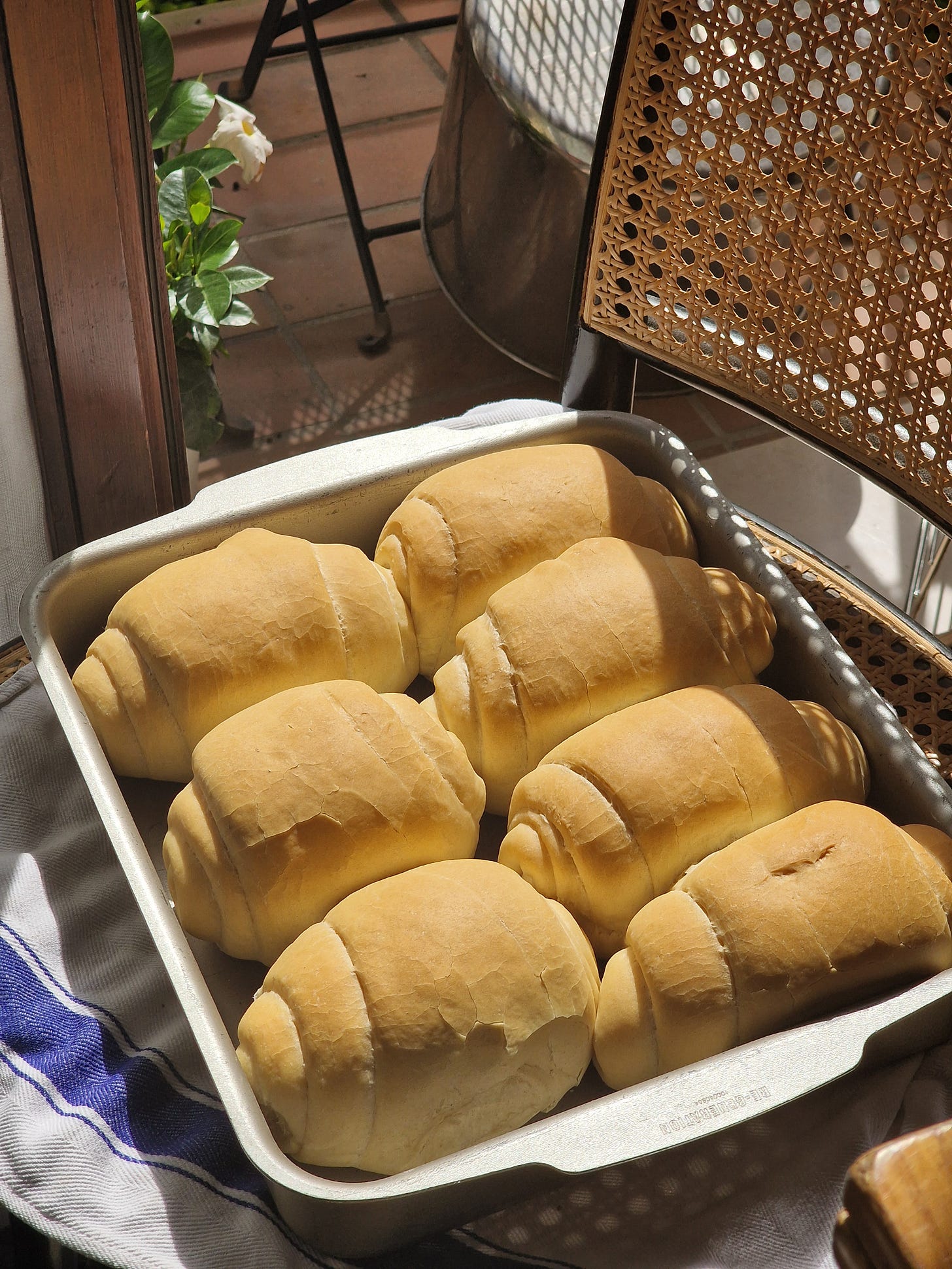


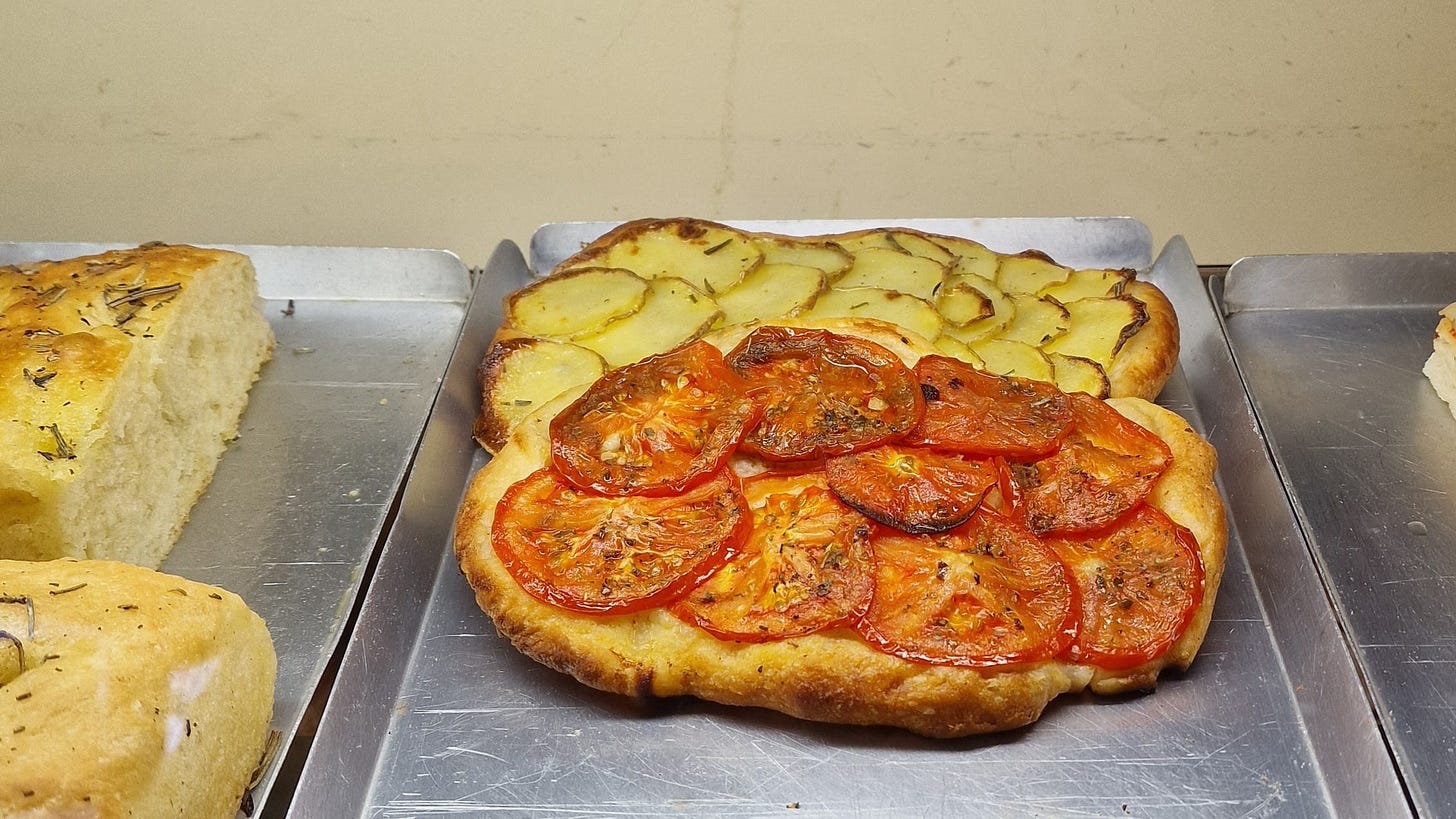
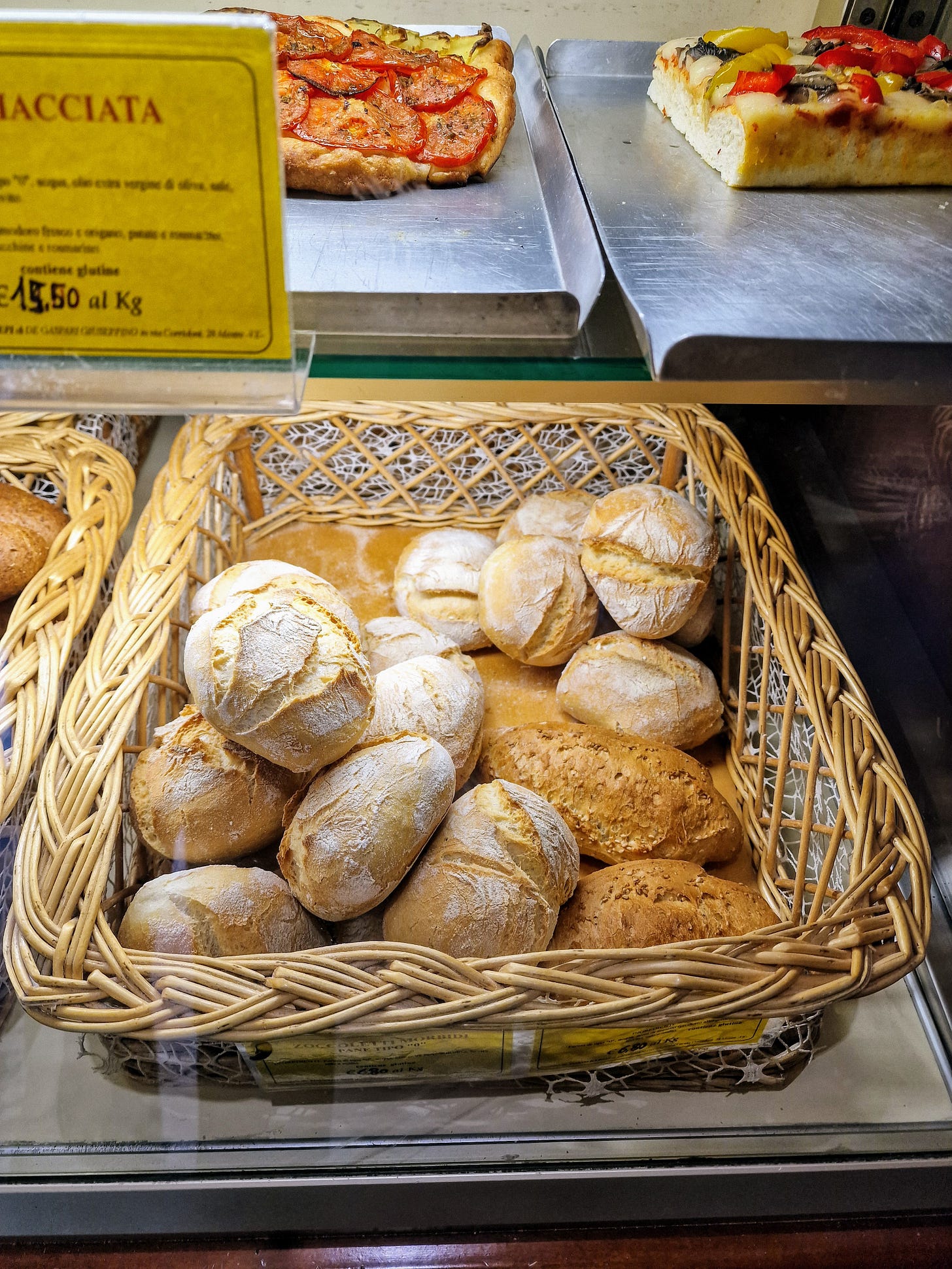






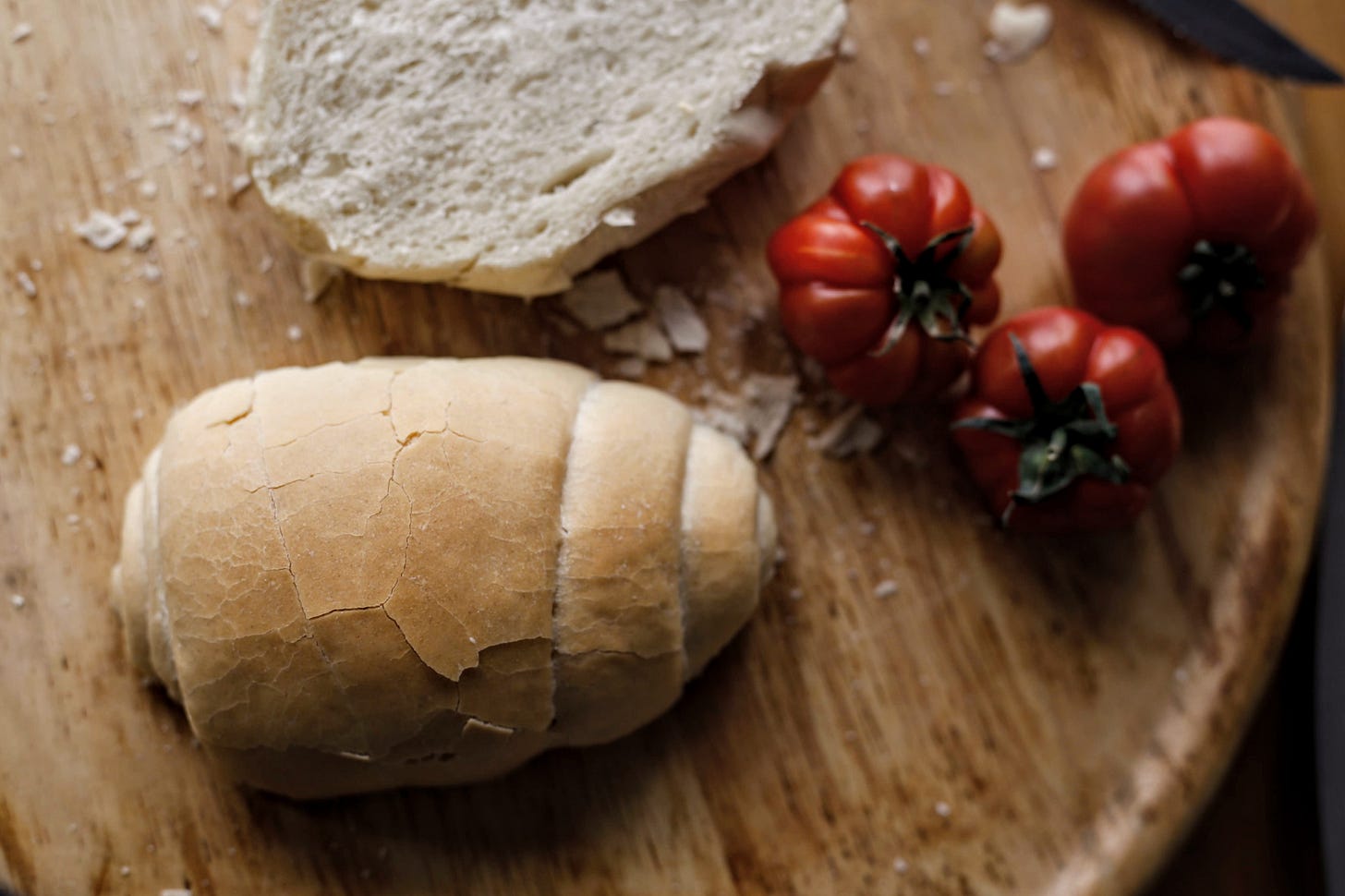

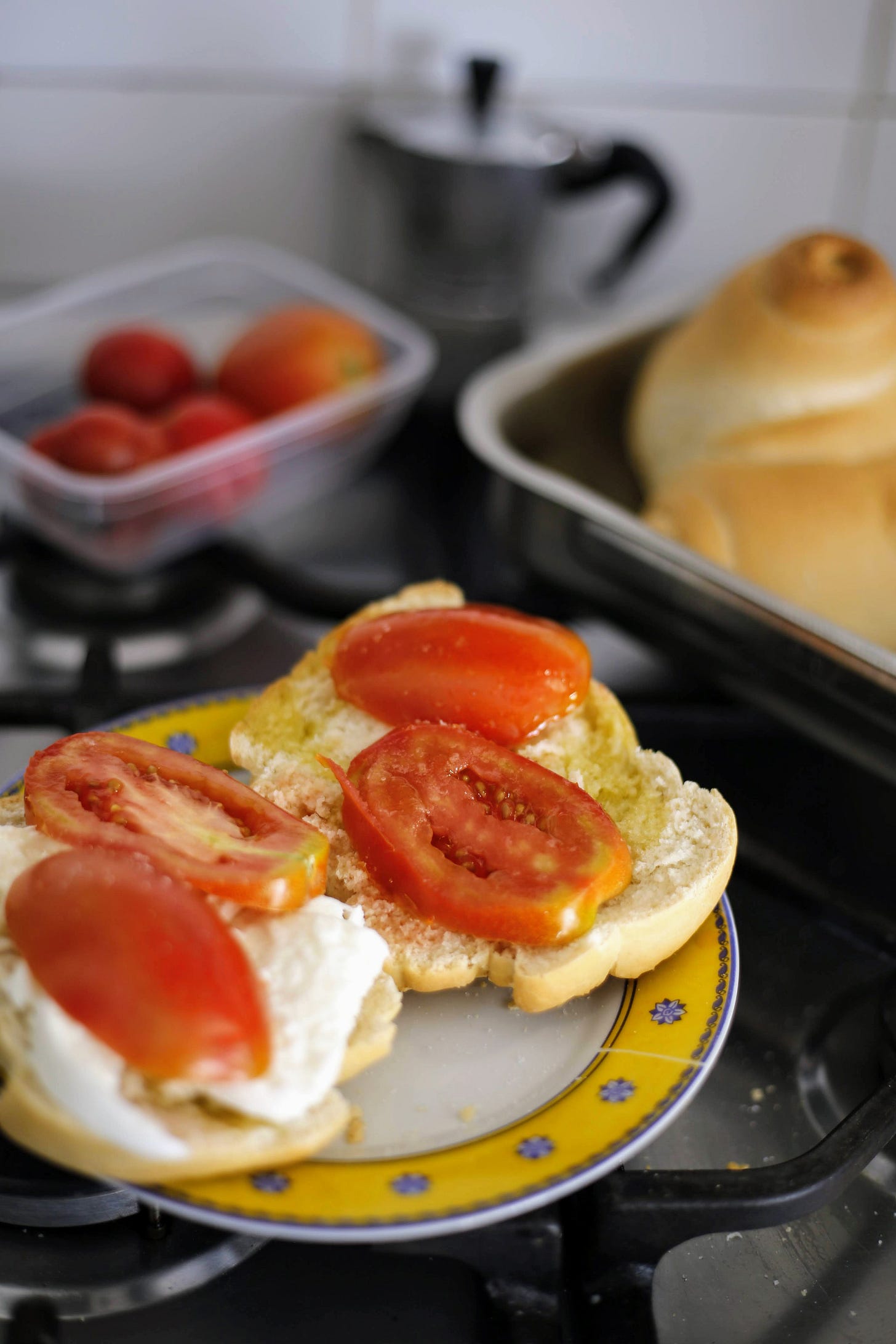
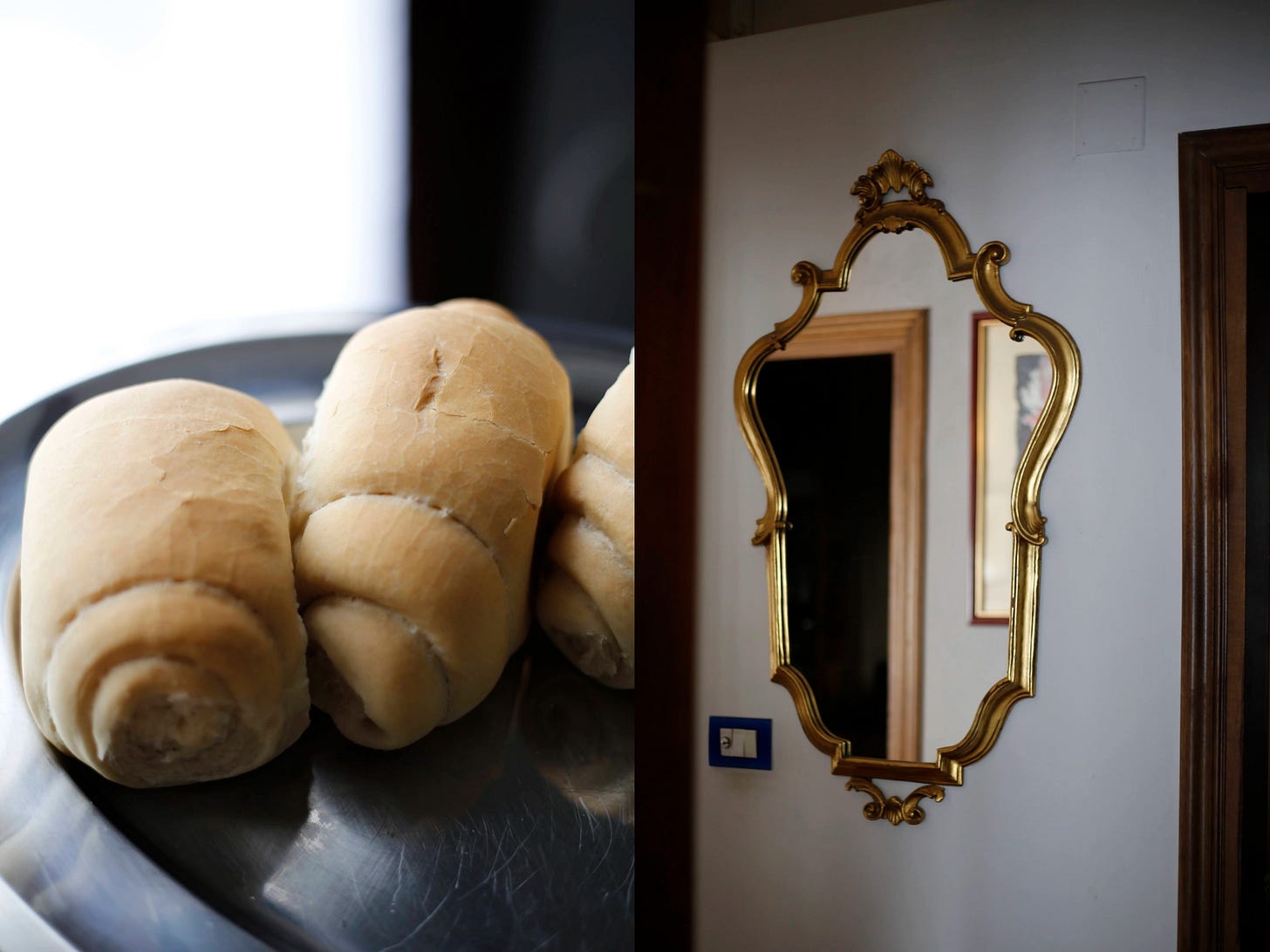




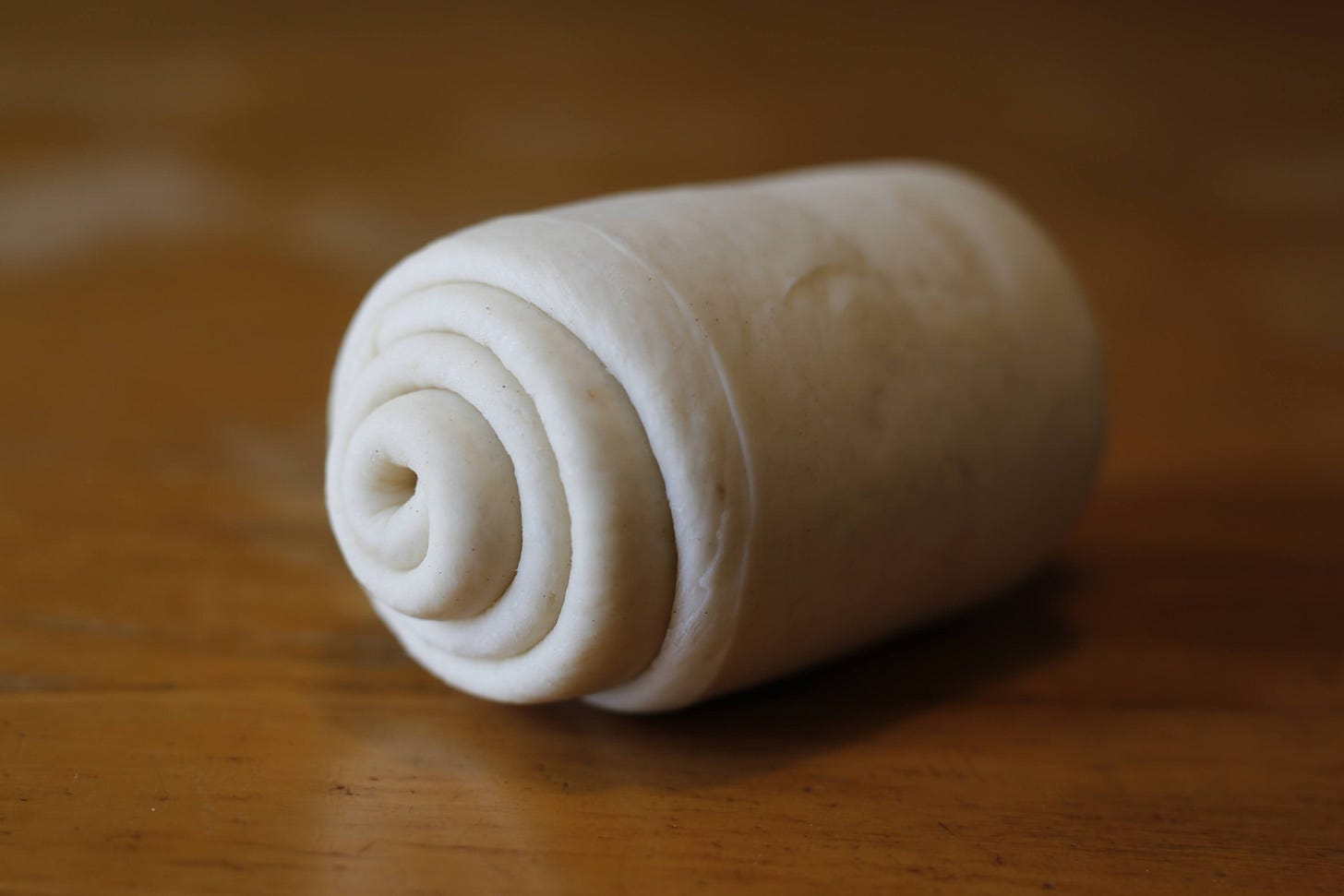




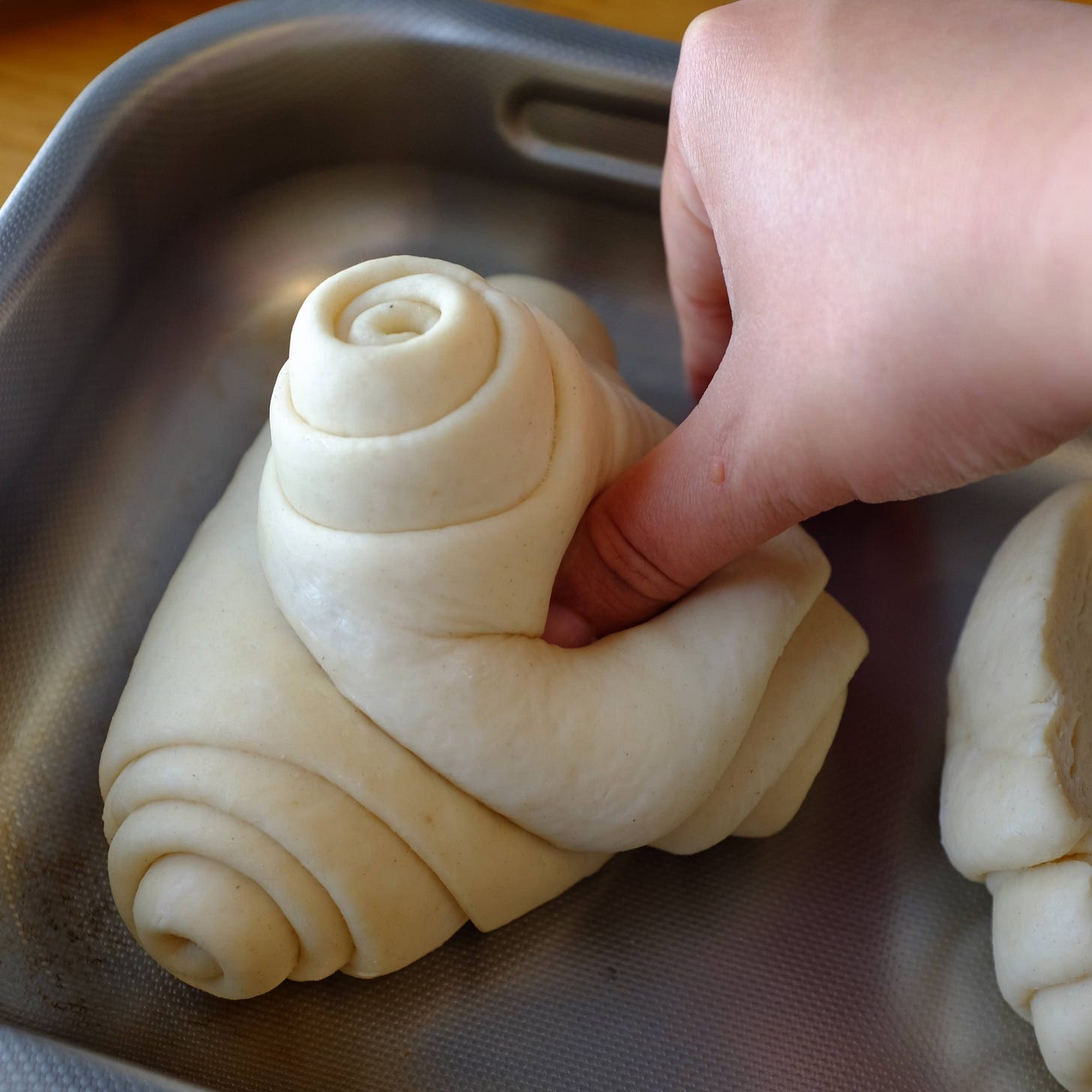

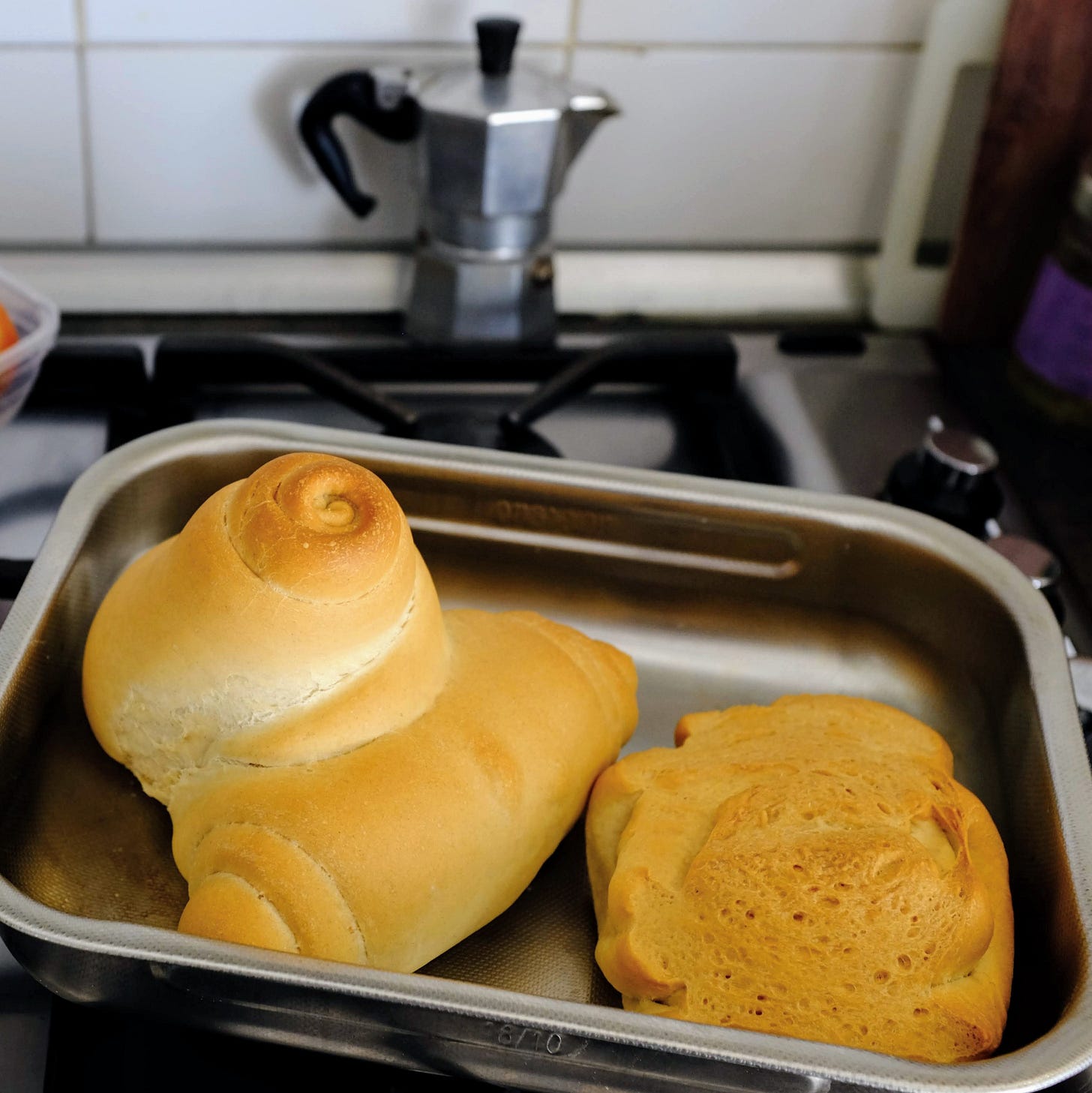
It's a lovely article made all the more enticing because my partner has an experimental loaf of bread in the oven! We're both new SS writers, and he wanted to experiment using an AI-requested recipe to see how it would perform. I'm a pastry chef, so I compared the weights in the recipe to baker's percentages of two recipes I already have. It's fun testing. So pleased that your lovely neighborhood bakery lives on!
Glory to the mom-and-pop owners of their businesses. These buns look wonderful and will give it a try. Thx!
https://writerswrites.com/